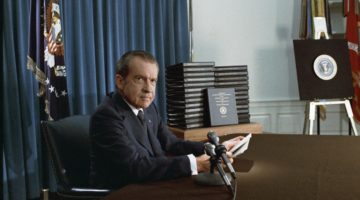Let’s hear it for New York: Exploring identity at the Tribeca Film Festival
Tribeca is not just a neighbourhood in New York City, (often stylized as TriBeCa), it refers to the Triangle Below Canal Street, and the triangle is not even a triangle. It is about as far downtown as one can get in New York City, and lies in the shadow of the former World Trade Centre, (appropriately, the Festival began in 2002, by Jane Rosenthal, Robert De Niro and Craig Hatkoff). The Tribeca Film Festival is an explosion of ideas, and yet being a New York festival, seems to have the feeling of seeking identity. This is obvious in the Viewpoints section, a carefully selected and curated 27 films, both narrative and documentary, which this year actually revolves around the theme of identity. The films of Tribeca 2015, even those screening outside of Viewpoints, that we selected as standouts, seem to be in a similar vein, as feeling something of uncertainty, and each film surprisingly seems very much to be about New York, and yet they are about as diverse as is humanly possible.
All Eyes and Ears
Ostensibly the tale of Jon Huntsman, a Republican and former Governor of Utah being nominated by Barack Obama to become the U.S. ambassador to China, the film is so much more. Filmmaker Vanessa Hope has found unprecedented access to an account of Huntsman’s trip to China with his wife Mary Kaye Huntsman, a fascinating character herself, and five of their children. The one given the most attention in the film is Gracie Mei Huntsman, the adopted daughter of the Huntsmans and likely the reason why this film was one of the documentaries chosen to play as a part of Viewpoints, as the identity of Gracie Mei, Chinese, American, Chinese-American, is close to the forefront at all times. In fact, Hope managed to get Gracie Mei, who has grown up significantly, (the primary events take place from 2009-2011), to come back to narrate the film, and her transformation in a few short years in nothing shy of remarkable. But the story is also that of Chen Guangcheng, a blind civil rights activist, and of Jon Hunstman stirring up trouble by being in the wrong places at the wrong times, and then Christian Bale shows up, and Hillary Clinton, and there is so much subtext. All Eyes and Ears is an essential document of how China and the United States are different in so many ways, but of the similarities, and New York City has a very important role within the film as well.
Angry Sky
Another amazing feature of the fest is that within its integration is the Tribeca/ESPN Sports Film Festival, presented by Mohegan Sun. This year’s program is fascinating, as Eva Longoria, Katie Holmes, and Spike Lee all contribute to the program, (as does ESPN partner Marvel), but perhaps the film that best seem to represent the spirit of uncertainty is Angry Sky, directed by Jeff Tremaine, perhaps best known as the director and co-creator of Jackass, but also a huge sports guy and BMX rider. It is quite surprising that the story of Nick Piantanida is not very well known, and that when Felix Baumgartner completed his celebrated Red Bull Stratos jump that he was breaking the fifty year old record of Piantanida’s. In fact, the story of Piantanida is almost absurd in how little training and how much ambition that the father of three had in launching his attempt in the first place, until it suddenly becomes clear. Though not stated in the film, Piantanida is the original Jackass. This documentary, soon to air as a 30 for 30 on June 8th, is incredible at celebrating Piantanida.
Come Down Molly
Talk about a film that defies expectations. We had originally thought that Come Down Molly was a drug-addled silly romp through the mountains, but the movie by Gregory Kohn, and starring an incredible Eléonore Hendricks, perhaps best known from her collaboration with Josh and Bennie Safdie, as Molly, a single mother ready to get away from it all, and reuniting with her old school friends in order to do so. Once out in nature, the film takes a surprisingly poignant turn, but stays quite funny throughout. But it is a different sort of humour than expected a kind of bawdy, self-aware humour that could only carry through with a strong lead performance and well-shot sense of restraint by Kohn. The biggest surprise of Come Down Molly is that it did not feel like hanging out with a bunch of high individuals, but instead becomes an integrative experience that finds us questioning what’s important to us, and how we all need to occasionally come on down.
Cronies
The influence of Spike Lee is present within Michael J. Larnell’s Cronies, (which makes sense, as Spike serves as an executive producer, and Larnell is currently enrolled at NYU film school). But calling Cronies a Spike-like project is extremely reductionist, especially since the setting of St. Louis is slickly evocative in the summer-set Cronies. At its heart the film is a bromance between Jack (Zurich Buckner) and Louis, (George Sample III), bound together by an earlier incident, which is kind of beside the point, and a third Crony Andrew, (Brian Kowalski), who is white and kind of silly, and yet essential to forming the friendship triangle. The setting of St. Louis absolutely crackles, and the decision to shoot in black and white, (mainly), serves to electrify the proceedings even more. Best of all, Cronies is surrounded by a faux interview style that serves to make the proceedings feel even more intimate, and serve to get the message across that this story does not belong to these Cronies, but to all.
Indian Point
The film that meets the expectations the closest ends up still becoming the most upsetting, (and pressing, because the nuclear reactor of Indian Point is in Buchanan, New York, just 38 miles north of New York City, and really quite troubling as to how the situation has gotten as far as it did. This documentary is a horror movie at its core, though it is quite incredible as to how low-key director Ivy Meeropol plays the proceedings. The camera of Meeropol, who directed the fascinatingly intimate Heir to an Execution, here does the same with the portrayal of Chairman Gregory Jaczko, a dead ringer for Corey Stoll, beginning as the villain of the film, but then the swerve arrives, and blindsides the audience. Very much resembling Laura Poitras’s Citizenfour, though somehow even more insistent, and more urgent than Poitras’s account of Edward Snowden, (fewer bleeps and bloops on the soundtrack as well), and the nuclear disaster at Fukushima is brought up constantly. Indian Point will be screening at festivals closer to Canada, but the film will best scare and hit close to home in New York City.
Interview With a Free Man / My Enemy, My Brother
These two Canadian short documentaries have quite different settings, as one comes to a head in British Columbia, and the other in an anonymous building in Quebec. But Nicolas Lévesque’s Interview With a Free Man, from the NFB, and Ann Shin’s My Enemy, My Brother from BravoFACT, named a New York Times Op-Doc are both shining examples of the power of Canadian short films.

Interview With a Free Man runs only six minutes long, but manages to pack so much action and intrigue into these six minutes, in a way that seems to resemble Denis Côté’s Joy of Man’s Desiring, but with an intuitive worldview all of its own, Lévesque reveals the men to be quite oblique as to their pasts, and seems to probe us to reveal which secrets we are hiding too. The end credits seem to add a little extra twist. Shin’s film is a little longer, but the turns in My Enemy, My Brother are really representative of the maxim that truth is stranger than fiction, and the two men presented here, a child soldier and a fighter from the other side are linked together in ways unimaginable. Even their shared names hold a key to unlocking this mystery. Shin’s probing work is optimal for Tribeca, as the story seems to be one of the futility and the horror of war, but also the codes and the honour, and the film left us with a feeling of fighting back tears.
Necktie Youth
Sibs Shongwe-La Mer’s explosive film set in Johannesburg, (or Jo’burg), seems to exist in another world, never mind another country. The story begins with an ending, and the expectations just go out the window from there. Essentially a string of conversations, reactions, digressions, and a healthy dose of hilarity go into this frequently discursive but always fascinating film. Shot in shrill black and white, (mostly), the flashes of rouge introducing characters in intertitle sequences, and occasionally seeping through with colour, Necktie Youth is a very difficult watch at times, and we imagine that the film will not be to everyone’s taste. But the movie lingers on at length afterwards, as the search for identity is not an easy one when faced with the conclusions given by the characters in the film. The director appears as the character September, as his style of speech is so captivating, as his English sounds recognizable and profoundly alien at the same time, unlike any South African accent that we have heard before. The picture of Mandela ground the film in a time and place, but Jo’burg could be anywhere at all, but also not one single place at the same time. The film is an absolute stunner.
Sworn Virgin
The absolute joy of the Tribeca Film Festival is getting to see the number of Italian films playing at the festival, (perhaps a nod to the heritage of co-founder DeNiro), and the Italian film that stands out more than most, and is such a treat to behold, is Sworn Virgin, the debut feature from Laura Bispuri, which features an incredible performance by Alba Rohrwacher, who is absolutely transformative and perhaps best exemplifies the spirit of the Viewpoints section of identity. The opening scenes, set in the mountains, (here, the character comes down from the mountain, while in Come Down Molly, she goes up) are magnificent in their cinematography, and extremely expansive, which does not prepare us for the intimacy which we encounter when Rohrwacher’s character, once a woman in Albania who threw away the shackles of womanhood, swore an oath of virginity and bound her breasts, re-emerges as Mark. This journey is aided by the fact that Sworn Virgin’s story is about far more than a woman living as a man, as scenes of swimming, also so vital to the narrative of Necktie Youth are quite evocative here. In fact, certain scenes are quite provocative, rather than evocative for how Bispuri lets the camera focus tightly for an extended time period, but also to pull away without hesitation, cutting away from Rohrwacher, (who looks somewhat like Miles Teller) in some scarily intimate moments. The film’s ending is even more incredible.
The Tribeca Film Festival runs from April 15 to April 26 2015. For further information and to purchase tickets please visit https://tribecafilm.com/festival












